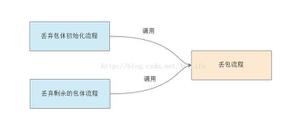python开发之list操作实例分析
本文实例分析了python开发之list操作。分享给大家供大家参考,具体如下:
对python中list的操作,大家可以参考《Python list操作用法总结》
以下是我个人的笔记:
'''
创建list有很多方法:
1.使用一对方括号创建一个空的list:[]
2.使用一对方括号,用','隔开里面的元素:[a, b, c], [a]
3.Using a list comprehension:[x for x in iterable]
4.Using the type constructor:list() or list(iterable)
'''
def create_empty_list():
'''Using a pair of square brackets to denote the empty list: [].'''
return []
def create_common_list():
'''Using square brackets, separating items with commas: [a], [a, b, c].'''
return ['a', 'b', 'c', 1, 3, 5]
def create_common_list2():
'''Using a list comprehension: [x for x in iterable].'''
return [x for x in range(1, 10)]
def str_to_list(s):
'''Using a string to convert list'''
if s != None:
return list(s)
else:
return []
def main():
test_listA = create_empty_list()
print(test_listA)
print('#' * 50)
test_listB = create_common_list()
print(test_listB)
print('#' * 50)
test_listC = create_common_list2()
print(test_listC)
print('#' * 50)
test_str = 'i want to talk about this problem!'
test_listD = str_to_list(test_str)
print(test_listD)
if __name__ == '__main__':
main()
运行效果:
Python 3.3.2 (v3.3.2:d047928ae3f6, May 16 2013, 00:03:43) [MSC v.1600 32 bit (Intel)] on win32
Type "copyright", "credits" or "license()" for more information.
>>> ================================ RESTART ================================
>>>
[]
##################################################
['a', 'b', 'c', 1, 3, 5]
##################################################
[1, 2, 3, 4, 5, 6, 7, 8, 9]
##################################################
['i', ' ', 'w', 'a', 'n', 't', ' ', 't', 'o', ' ', 't', 'a', 'l', 'k', ' ', 'a', 'b', 'o', 'u', 't', ' ', 't', 'h', 'i', 's', ' ', 'p', 'r', 'o', 'b', 'l', 'e', 'm', '!']
>>>
下面有更多的demo:
Python 3.3.2 (v3.3.2:d047928ae3f6, May 16 2013, 00:03:43) [MSC v.1600 32 bit (Intel)] on win32
Type "copyright", "credits" or "license()" for more information.
>>> counter = 100
>>> miles = 1000.0
>>> name = "hongten"
>>> numberA,numberB,nameC = 1,2,"Hongten"
>>> list = [counter,miles,name,numberA,numberB,nameC]
>>> print(list)
[100, 1000.0, 'hongten', 1, 2, 'Hongten']
>>> #这是注释部分,注释用"#"开始
>>> for element in list:
print(element)
100
1000.0
hongten
1
2
Hongten
>>> #上面是遍历列表list
>>> print(list[0]) #获取列表list里面的第一个元素值
100
>>> print(list[-1]) #获取列表list里面的最后一个元素值
Hongten
>>> print(len(list)) #用len(list)获取list列表的长度
6
>>> num_inc_list = range(10) #产生一个数值递增的列表
>>> print(num_inc_list)
range(0, 10)
>>> for inc_list in num_inc_list:
print(inc_list)
0
1
2
3
4
5
6
7
8
9
>>> #从这里我们可以看到range(10)是产生了一个从0开始到9的一个数值递增列表
>>> initial_value = 10
>>> list_length = 5
>>> myList = [initial_value for i in range(10)]
>>> print(myList)
[10, 10, 10, 10, 10, 10, 10, 10, 10, 10]
>>> list_length = 2
>>> myList = myList * list_length
>>> print(myList)
[10, 10, 10, 10, 10, 10, 10, 10, 10, 10, 10, 10, 10, 10, 10, 10, 10, 10, 10, 10]
>>> print(len(myList))
20
>>> #上面是用一个固定值initial_value去初始化一个列表myList
>>> #同时用myList = myList * list_length去复制myList
>>> #下面再看看复制的效果
>>> copyList = [1,2,3,"hongten"]
>>> copyList = copyList * list_length
>>> print(len(copyList))
8
>>> for cl in copyList:
print(cl)
1
2
3
hongten
1
2
3
hongten
>>> #下面我们来仔细研究一下python里面的list
>>> #在一个list中可以包含不同类型的元素,这个和ActionScript 3.0(AS3.0)中的数组类似
>>> test_list = ["hello",1,2,"world",4,5,"hongten"]
>>> print(len(test_list))
7
>>> print(test_list[0]) # 打印test_list
hello
>>> #打印test_list中的第一元素
>>> print(test_list[-1]) #打印test_list中最后一个元素
hongten
>>> print(test_list[-len]) #打印第一个元素
Traceback (most recent call last):
File "<pyshell#44>", line 1, in <module>
print(test_list[-len]) #打印第一个元素
TypeError: bad operand type for unary -: 'builtin_function_or_method'
>>> print(test_list[-len(test_list)]) #打印第一个元素
hello
>>> print(test_list[len(test_list) - 1]) #打印最后一个元素
hongten
>>> test_list.append(6) #向列表中追加一个元素
>>> print(test_list[-1])
6
>>> test_list.insert(1,0)
>>> print(test_list)
['hello', 0, 1, 2, 'world', 4, 5, 'hongten', 6]
>>> #上面的操作是向列表test_list的小标为1的地方插入元素0
>>> test_list.insert(1,0)
>>> print(test_list)
['hello', 0, 0, 1, 2, 'world', 4, 5, 'hongten', 6]
>>> test_list.insert(2,1)
>>> print(test_list)
['hello', 0, 1, 0, 1, 2, 'world', 4, 5, 'hongten', 6]
>>> print(test_list.pop(0)) #返回最后一个元素,并从test_list中删除之
hello
>>> print(test_list)
[0, 1, 0, 1, 2, 'world', 4, 5, 'hongten', 6]
>>> print(test_list.pop(2)) #上面的注释有错误,pop(index)的操作是返回数组下标为index的元素,并从列表中删除之
0
>>> print(test_list)
[0, 1, 1, 2, 'world', 4, 5, 'hongten', 6]
>>> test_list.remove(1)
>>> print(test_list)
[0, 1, 2, 'world', 4, 5, 'hongten', 6]
>>> #remove(1)表示的是删除第一次出现的元素1
>>> test_list.insert(0,1)
>>> print(test_list)
[1, 0, 1, 2, 'world', 4, 5, 'hongten', 6]
>>> test_list.remove(1)
>>> print(test_list)
[0, 1, 2, 'world', 4, 5, 'hongten', 6]
>>> test_list.insert(2,"hongten")
>>> print(test_list)
[0, 1, 'hongten', 2, 'world', 4, 5, 'hongten', 6]
>>> test_list.count("hongten")
2
>>> #count(var)是统计var元素在列表中出现的个数
>>> test_list.count("foo")
0
>>> test_list_extend = ["a","b","c"]
>>> test_list.extend(test_list_extend)
>>> print(test_list)
[0, 1, 'hongten', 2, 'world', 4, 5, 'hongten', 6, 'a', 'b', 'c']
>>> #使用extend(list)作用是追加一个list到源list上面
>>> print(test_list.sort())
Traceback (most recent call last):
File "<pyshell#76>", line 1, in <module>
print(test_list.sort())
TypeError: unorderable types: str() < int()
>>> test_list_extend.append("h")
>>> test_lsit_extend.append("e")
Traceback (most recent call last):
File "<pyshell#78>", line 1, in <module>
test_lsit_extend.append("e")
NameError: name 'test_lsit_extend' is not defined
>>> list_a = ["e","z","o","r"]
>>> list_a.extend(test_list_extend)
>>> print(list_a)
['e', 'z', 'o', 'r', 'a', 'b', 'c', 'h']
>>> print(list_a.sort()) #对list_a列表进行排序
None
>>> #不知道为什么以上排序都有报错......
>>> list_b = [1,3,5,2,6,4]
>>> print(list_b.sort())
None
>>> print(sort(list_b))
Traceback (most recent call last):
File "<pyshell#86>", line 1, in <module>
print(sort(list_b))
NameError: name 'sort' is not defined
>>> #不去管排序问题了,先看看删除操作吧!!!!!
>>> print(list_b)
[1, 2, 3, 4, 5, 6]
>>> print(del list_b[1])
SyntaxError: invalid syntax
>>> del list_b[1]
>>> print(list_b)
[1, 3, 4, 5, 6]
>>> del list_b[0,2]
Traceback (most recent call last):
File "<pyshell#92>", line 1, in <module>
del list_b[0,2]
TypeError: list indices must be integers, not tuple
>>> del list_b[0:2]
>>> print(list_b)
[4, 5, 6]
>>> #del list[index]删除下标为index的元素,del list[start:end]删除从start下标开始到end下标结束的元素
>>> del list_b[10]
Traceback (most recent call last):
File "<pyshell#96>", line 1, in <module>
del list_b[10]
IndexError: list assignment index out of range
>>> #如果我们删除的下标超出了列表的长度范围,就会报错啦!!!!!
>>> ##########################################################################
>>> list_c = range(5);
>>> for c in list_c:
print(c)
0
1
2
3
4
>>> list_d = list_c
>>> for d in list_d:
print(d)
0
1
2
3
4
>>> #上面是列表的复制
>>> list_d[2] = 23
Traceback (most recent call last):
File "<pyshell#108>", line 1, in <module>
list_d[2] = 23
TypeError: 'range' object does not support item assignment
>>> list_e = [1,2,3,4,5]
>>> list_f = list_e
>>> list_f[2] = 234
>>> print(list_e)
[1, 2, 234, 4, 5]
>>> #从这里我们可以知道,list_f复制了list_e,list_f是对list_e的一个引用,
>>> #他们共同指向一个对象:[1,2,3,4,5],当我们视图修改list_f[2]的值的时候,
>>> #list_f所指向的对象的行为发生了变化,即元素值发生了变化,但是他们的引用是没有
>>> #发生变化的。所以list_e[2] = 234也是在情理之中。
>>> #######################################################################
>>> list_i = list_e[:]
>>> print(list_i)
[1, 2, 234, 4, 5]
>>> print(list_e)
[1, 2, 234, 4, 5]
>>> list_i[2] = 3
>>> print(list_e)
[1, 2, 234, 4, 5]
>>> print(list_i)
[1, 2, 3, 4, 5]
>>> #上面是进行了列表的克隆操作,即拷贝了另一个列表,这样的操作,会创造出新的一个列表对象
>>> #使得list_i和list_e指向不同的对象,就有着不同的引用,所以当list_i[2] = 3的时候,
>>> #list_e[2]还是等于234,即不变
>>>
希望本文所述对大家Python程序设计有所帮助。
以上是 python开发之list操作实例分析 的全部内容, 来源链接: utcz.com/z/346876.html





